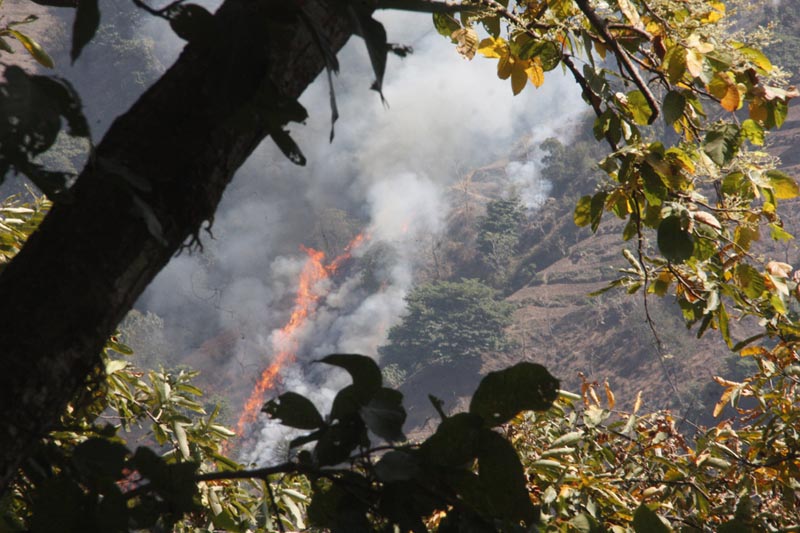Only 67 groups of trained firefighters for 19,000 community forests in Nepal
Kathmandu, March 21
Nepal is grossly ill-equipped to deal with forest fires, with only 67 community forests having trained forest fire management groups out of 19,000 community forests in the country.
During a discussion programme held here today on the occasion of International Day of Forest, Coordinator of UNISDR-Regional South Asia Wild Fire Network Sundar Prasad Sharma said, “Progress at the field level with regard to forest fire management is dismal. In the 10 years that we have been attempting to develop scientific forest fire management in the country, we have only succeeded in producing 67 groups of trained forest fire managers.”
Sharma said a community level forest fire management group required three days of basic firefighting training, and trainers must have seven days’ of training themselves. The forest fire management group will be trained to use local available resources to prevent and fight forest fires effectively.
So far, a few hilly, Tarai, and mountainous districts have local forest fighting groups with forest firefighting equipment from the Nepal Forest Fire Management Chapter.
A foundation meeting of the UNISDR-Regional Wildland Fire Network had been organised in Kathmandu on 2-3 April 2007, with participants from Bangladesh, Bhutan, India, Nepal, Pakistan, and Sri Lanka.
The objective of the meeting was to provide a platform for discussion, policy dialogue, research, and development in wildland fire management in South Asia, aiming to enhance existing national and regional capability in fire management, including early detection, monitoring, impact assessment, and facilitating international cooperation in wildland fire management.
According to the network, forest fires occur most frequently in the fourth week of April in Nepal. The year 2009 was exceptionally disastrous with regard to forest fires in Nepal, with 358 fires occurring in a single day in April 25, 2009. A total of 49 persons, including 13 army personnel, died in 2009.
In 2016, forest fires destroyed 1.3 million hectares of forest, and killed eleven people.
Forestry expert Keshav Prasad Khanal said in Nepal, most forest fires were accidental, spreading from farms, homes, honey farms, and cigarettes. Intentional causes of fires included fires started to clear land, for access, and to reduce risk of human-wildlife conflict. Climate change is a rising major factor causing increased incidents of forest fires all around the world.






